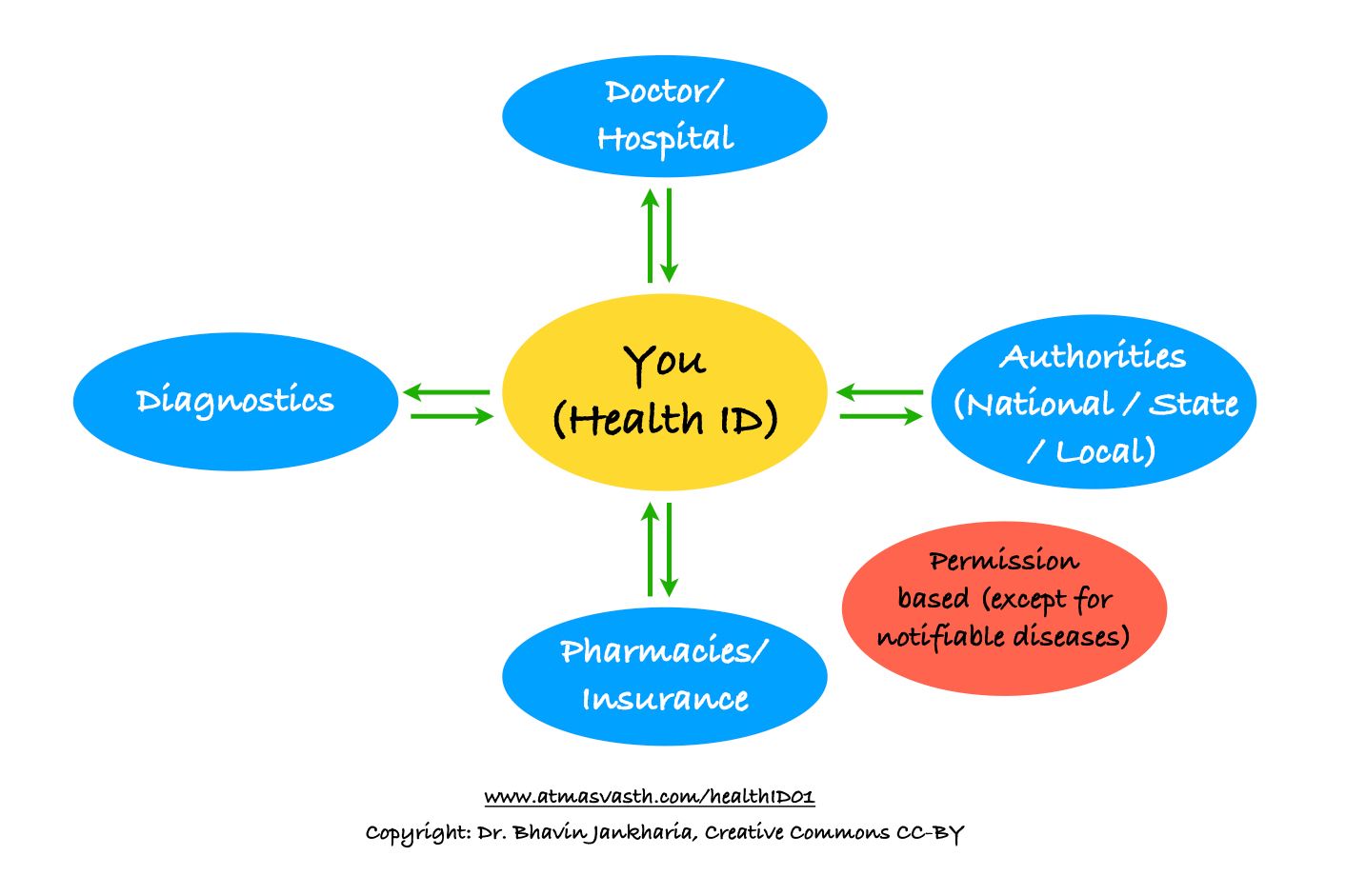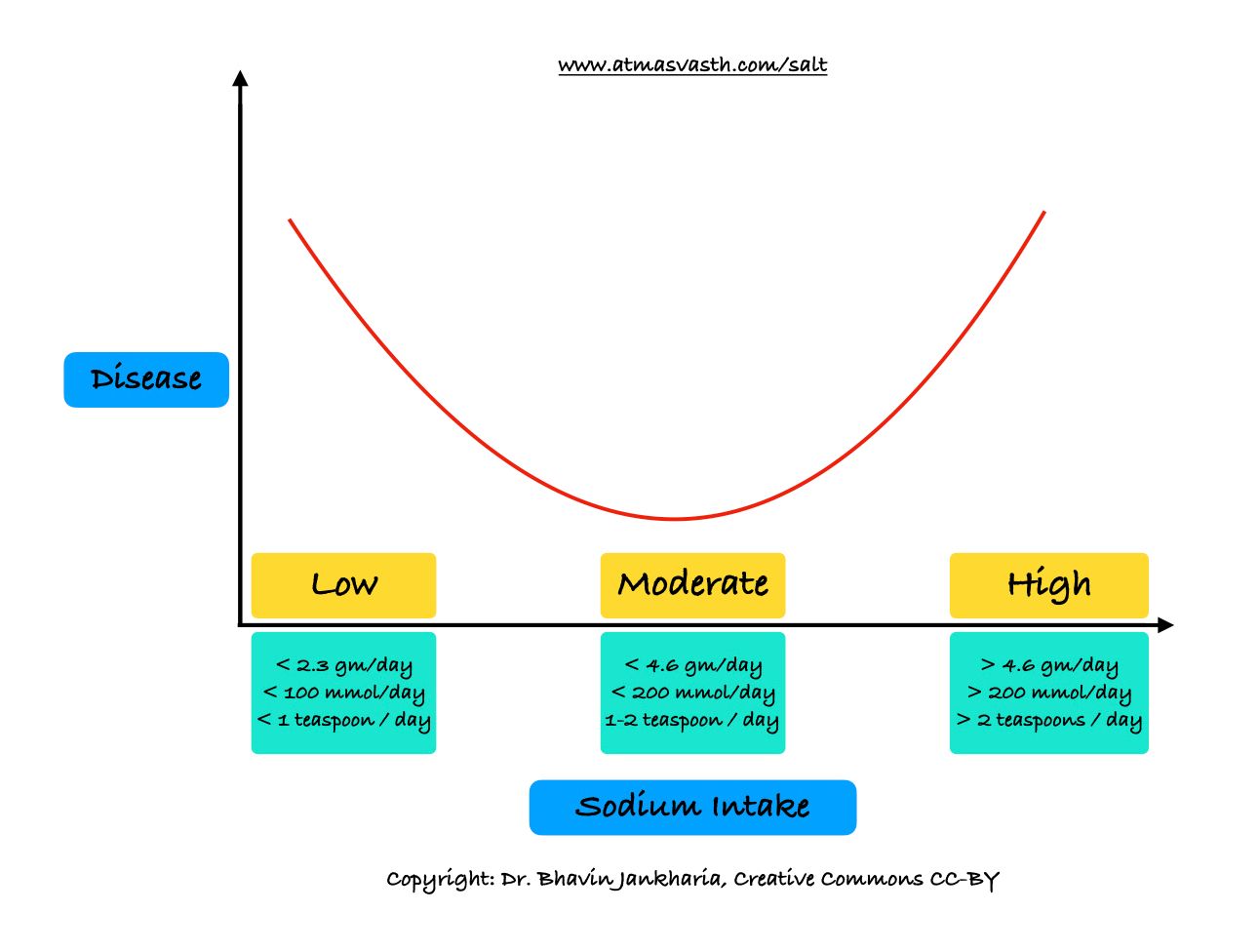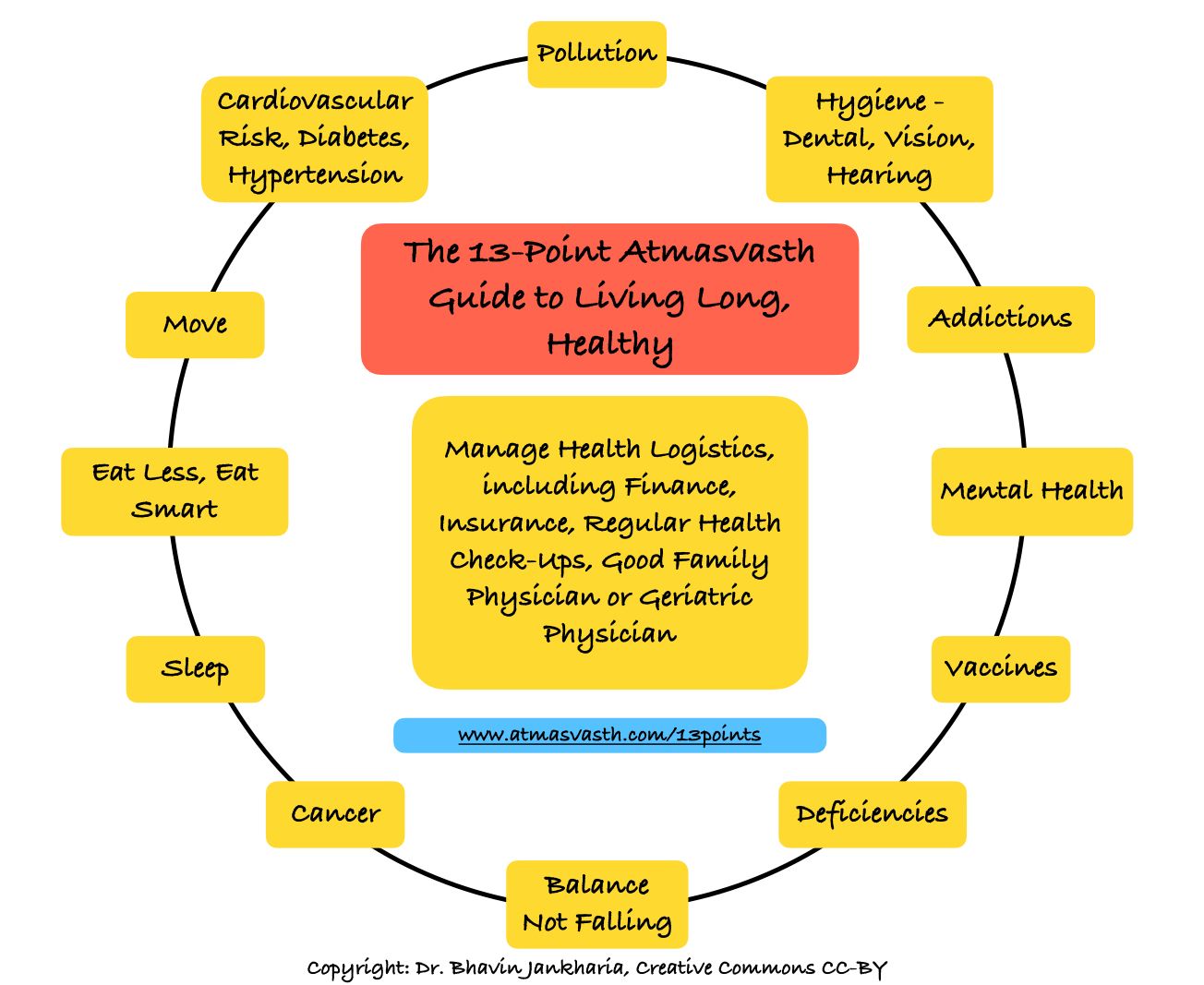Your Health ID
Your Health ID through NDHM is a game-changer and will help you live long, healthy

You can listen to the audio/podcast hosted on Soundcloud by clicking the Play button below within the browser itself. You can click here to access directly from your email.
Two weeks ago, a 70-years old ex-smoker, was referred to me for a CT scan guided lung nodule biopsy. I thought the nodule looked benign and non-cancerous, but there were no prior scans or radiographs to compare with. My coordinator kept pushing the patient and his relatives to check for old reports. They kept saying they didn’t have any. Finally, one day prior to the biopsy, the daughter-in-law came over with an X-ray of the chest done 10 years ago, as part of the pre-operative work-up for a gall bladder surgery. The same nodule that I was supposed to biopsy was present on that 10-years old chest X-ray…unchanged. Any lung nodule that remains the same for more than two years is assumed to be benign and left alone. When I told the patient and the family this, they were overjoyed…from a potential lung cancer, the diagnosis had changed to…”nothing abnormal to worry about”.
If only we had had a system that would have automatically alerted all of us to the presence of his 10-years old chest X-ray. The patient would have been saved one week of emotional and mental trauma along with the cost and stress of a CT scan, a PET/CT and the consultation fees of two senior physicians, amounting to around Rs. 40,000.
A system that maintains electronic health records is generically called an EHR system for short. For the last two decades or so, smart engineers and doctors have broken their heads trying to create EHR systems that work well. While it is not that difficult to write code and create a working EHR, the challenge is getting the same EHR adopted widely to make a difference and for different EHRs to connect with each other and share data and information. We have a good EHR in our practice and we can easily access old records of all our patients going back six years and sometimes even more, but if the patient / person has been to another diagnostic centre or hospital in the interim, then we are back to square one. There is no grid or network that allows EHRs of different hospitals and diagnostic centres to talk to each other.
Healthcare stakeholders have been crying themselves hoarse that we need an EHR system that places you as an individual at the centre and allows you and/or your family to manage your health records yourselves, automatically, irrespective of which doctor or hospital you go to.
The ideal scenario would be like this. You have fever. You go to Doctor A, who examines you, advises tests and enters all this in her EHR, which then links to your individual record or Health ID. The laboratory you go to uploads all the tests via its proprietary EHR into your Health ID. Doctor A and you can both see those results immediately. You now need a CT scan, which is done at a third place. The CT scan staff is able to pull Doctor A’s notes and the laboratory results from your Health ID into their EHR. Once the scan is done, the report and images are uploaded to your Health ID and sent to Doctor A and you. Now, you have to see Doctor B, a specialist in Hospital C. The moment you make an appointment and give permission, Doctor B and Hospital C have access to your laboratory results, the CT scan report and images and Doctor A’s notes in advance, so that by the time you see Doctor B, he has already done his homework. After the consultation, he reaches a diagnosis of tuberculosis and prescribes you the necessary medicines. All this information via Hospital C’s EHR, is pushed into your Health ID. You can then either send the prescription to a linked pharmacy or you can show the prescription on the app on your phone to the chemist and get the medicines. Since tuberculosis is a notifiable disease, this information also automatically goes to the appropriate Central and local health authorities (without your permission), which in turn allows for contact tracing, monitoring and better counting of TB cases. A health worker might also get in touch to ensure you are taking your medicines properly.
Nine months later, when you have finished your treatment, the Health ID will alert you to go see Doctor A or Doctor C for follow-up. If your tuberculosis has healed, the appropriate health authority will also be automatically notified.

A system like this is a game changer, not only for your own health, but also at a national level, where all our estimates of disease prevalence and deaths are partly just guesswork given the dismal state of record keeping in our country.
Google Health tried and failed. Amazon tried to do something in the US and failed. No major health stakeholder in India has come even close. Until now.
Five days ago, Mr. Modi launched the ABDM - the Ayushman Bharat Digital Mission, a part of the National Digital Health Mission (NDHM). The ABDM/NDHM now gives every Indian national a unique Health ID, an electronic repository of all your health related records. If you give permission to your doctor or hospital to view your Health ID (and the permission can be date based and exclude records you don’t want them to see), then the doctor/hospital will be able to clearly see your health status. The NDHM already has an Android app and has created APIs, which allow other existing EHRs to send and retrieve data from your Health ID with ease…hence those like us who are heavily invested into our own EHR systems can continue to use them without disruption, as long as our developers can connect with the NDHM and access your Health ID.
Eventually, every doctor or hospital you visit, with your permission (unless you have a statutory notifiable disease), will upload your case files, pathology, radiology and other reports into your Health ID. Each time you visit a doctor or hospital, these records will be available for viewing and / or downloading, again with your permission.
This is a huge game-changer, especially for a country like ours with limited resources. While we are still not able to offer public screening for something as simple as fasting plasma glucose (FPG) to our entire population above the age of 20 or 30 years, each time in the future an opportunistic FPG test is done, the result will be automatically available in your health ID record. Even if you don’t know the significance of your tests results, eventually I am sure the ABDM/NDHM will be able to apply simple electronic rules or artificial intelligence (AI) based solutions that will flag abnormal results (without invading privacy) and send you alerts on the phone app or via SMS, urging you to see your doctor or a health worker or health coach.
The Health ID will allow us to live long, healthy…by giving us the means to maintain our records without the headache of remembering to upload them ourselves and by alerting us to potential situations that need remedy and eventually giving us more ammunition to monitor our health ourselves in our atmasvasth quest for a longer healthspan and lifespan.
I believe each one of us should get our Health ID at the earliest. It is simple and takes around 5 minutes on the NDHM site. I created mine four days ago. If you’ve been vaccinated after May/June 2021, it is likely that you already have a Health ID number on your vaccination certificate, in which case you can go onto the site and reconfirm and claim a name e.g. abcxyz@ndhm.
I will keep revisiting the ABDM/NDHM and Health ID issue over the next few years as things evolve. In the meantime, do go ahead and get your Health IDs.
Last Sunday's Post

Essential Reading

Atmasvasth Newsletter
Join the newsletter to receive the latest updates in your inbox.
